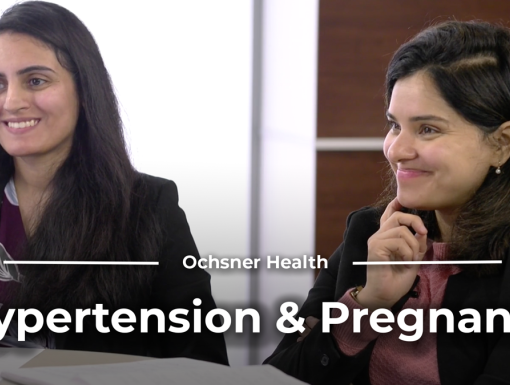
Why Timely Preeclampsia Detection Is Crucial for People Who are Pregnant
Preeclampsia, or high blood pressure during pregnancy and postpartum, might not be something you've heard of before. While the condition does not affect a large number of pregnancies, if it is not treated properly, it can cause some serious complications for the mother and baby.
What is Preeclampsia?
Preeclampsia is a condition that occurs during pregnancies and occasionally continues postpartum. It is characterized by high blood pressure levels, and it is usually diagnosed after 20 weeks of pregnancy in pregnant people whose blood pressure levels had previously been normal.
Advanced symptoms of preeclampsia can include:
- Headaches
- Abdominal pain
- Nausea and vomiting
- Confusion
- Blurred vision Signs of damage to the kidneys or liver
Preeclampsia can also affect the blood flow to the placenta, which can affect how your baby receives oxygen and food. This can cause your baby to have a lower birth weight. Most women who are diagnosed with preeclampsia will deliver healthy babies and not have any issues after their pregnancy. However, if it goes undiagnosed, the condition can become severe very quickly. The Preeclampsia Foundation reported that preeclampsia in the United States has increased by 25% in the last two decades and is the leading cause of maternal and infant illness and death.
Who Has a Higher Risk of Developing Preeclampsia?
Preeclampsia affects 5-8% of pregnancies. It is typically more common in first-time pregnancies, but some other factors may contribute to the condition. The most significant factors are:
- First-time moms
- Women who have a previous history of preeclampsia
- Women who have a family history of preeclampsia
- Women under 20 years of age or over 35
- Women who have Polycystic Ovary Syndrome (PCOS)
- Women carrying multiple babies
- Women who have a history of high blood pressure, diabetes or kidney disease before their pregnancy
- Women with autoimmune disorders like lupus, rheumatoid arthritis, sarcoidosis or multiple sclerosis
- Women who develop gestational diabetes
- Obesity (Having a Body Mass Index (BMI) of 30 or greater)
Can I Prevent Preeclampsia?
While you can’t necessarily prevent a preeclampsia diagnosis, there are certain steps you can take to monitor your health and decrease your chances of developing it.
- If you fall into one of the increased risk categories (first-time pregnancy, obesity, family history, under 20 or over 35 years of age, etc.) you should start taking a low-dose aspirin once you hit 12-28 weeks of pregnancy.
- Routinely check your blood pressure after 20 weeks of pregnancy. Check your pressure two days a week, with two readings in the morning and two readings in the evening. Allow five minutes between each reading. If you are unsure how to check your blood pressure at home, follow the American Heart Association’s recommendations.
- Make sure you are eating nutritious and well-balanced meals. The foods you are consuming should be full of vitamins, minerals and the basic food groups, like proteins, carbohydrates and fats. Reduce your consumption of processed foods, salts, refined sugars, alcohol and caffeine.
- Monitor your weight. Two of the major risk factors of developing preeclampsia are obesity and gestational diabetes. If you have plans to become pregnant, weight management will be important to make sure you are at a healthy weight before your pregnancy. Consult with your doctor on what a healthy BMI looks like for you.
- Get regular exercise throughout your pregnancy. Exercise can help reduce your blood pressure and prevent excess weight gain. Try walking, swimming or prenatal yoga for low impact exercises. Discuss with your OB/GYN before you start any exercise routine to determine if it is safe for you and your baby.
- Monitor your headaches during your pregnancy. If you have tried taking over-the-counter medication without relief for a headache or if your headache is very painful, and accompanied by light sensitivity, or vision changes, check your blood pressure and call your provider immediately for their recommendations.
If you ever feel anything out of the ordinary, especially after 20 weeks of pregnancy, get your blood pressure checked. If it is above average (120/80), contact your doctor.
How is Preeclampsia Treated?
Treatment for preeclampsia can depend on where you are in your gestational term. If you are close to your due date and your baby is fully developed, your doctor will most likely recommend delivering your baby as soon as possible.
If you are not far enough along in your pregnancy and your baby needs to develop more, your doctor will make treatment decisions based on the severity of your preeclampsia. If you have a mild case of preeclampsia, your doctor may recommend:
- Getting more rest. You may be placed on bed rest to ensure you are getting enough rest for you and your baby.
- Laying on your left side. This will help take the weight of your baby off your major blood vessels which will increase blood flow.
- Decreasing your salt intake. Because of high blood pressure levels, you want to avoid foods that are high in salts.
- Drinking more water. It is important to drink at least eight glasses of water a day.
- Increasing your protein intake through your diet.
- If you have a more severe case of preeclampsia, and your baby is not ready to be delivered, your doctor may prescribe various medications based on your symptoms.
- Antihypertensive medications may be administered if your blood pressure reaches dangerous levels (160/110 or higher).
- Steroid shots may be administered to help mature your baby in case you need to deliver before your due date.
- Preeclampsia usually worsens the further you are in your pregnancy, so your doctor may change treatment plans based on you and your baby’s health. If your preeclampsia continues to worsen, it can lead to the following life-threatening conditions:
- Eclampsia: A serious complication from preeclampsia that can lead to seizures in the mother. Eclampsia is rare and usually treatable. However, if it is left untreated, the seizures can lead to brain damage, coma and possible death of the mother and infant.
- HELLP syndrome: This occurs in about 5-12% of preeclampsia patients and is one of the most severe forms of preeclampsia. HELLP stands for hemolysis, elevated liver enzymes and low platelet count. It typically occurs late in pregnancy, and it can affect the breakdown of red blood cells, how the blood clots and liver function. Your baby will need to be delivered immediately if you develop HELLP syndrome.
After your baby is delivered, continue to monitor your heart health. You should make an appointment with your cardiovascular doctor or primary care doctor within 7-10 days postpartum to ensure your blood pressure levels are back to normal. We also recommend you schedule a comprehensive cardiovascular postpartum visit at three months.
Preeclampsia can increase your risk of advanced cardiovascular disease later in life, so continue to be diligent in checking your heart health. We highly recommend periodic follow up with your cardiologist.
Learn more about Ochsner Health's Heart & Vascular Institute.



